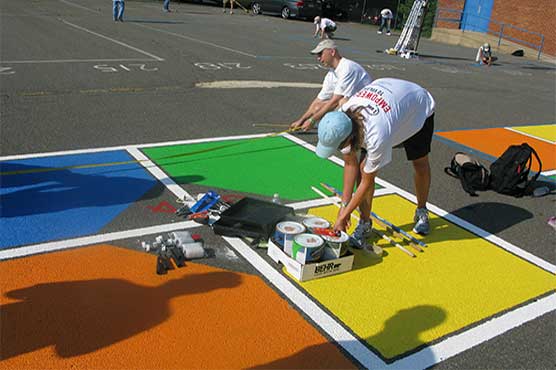Playground paint threat for children's health: study

The study revealed that the levels of toxic materials pose a major potential risk to children.
Islamabad, January 26 (Online): A has study suggested that playground equipment needs to be better monitored, as the paint in many areas contains levels of toxic substances that exceed safety guidelines.
Most parents have a protective instinct to shield their children from the dangers of the outside world, but often, we must trust that the health standards and regulations put in place are sufficient to keep our children safe.
Paint that is in a deteriorating condition, on a friction surface or on chewable surfaces is also categorized as a hazard, while lead can affect almost every organ and system in the body.
However, children under the age of 6 are most at risk of the ill effects of lead in the blood, which include behavior and learning problems, lower IQ, slowed growth, hearing problems and anemia.
The study revealed that the levels of toxic materials - including chromium, antimony, cadmium and lead - pose a major potential risk to children. the study revealed that in some cases, there were lead levels that were at 152,000 parts per million, which were detected in railings, handles and gates.
Interestingly, the researchers found the highest concentrations of lead and other toxic materials in yellow or red paints.
Furthermore, the age of the playground did not indicate potential hazards; some playgrounds were built in 2009.
Playground coatings are typically relatively safe when they are "undisturbed and intact."
Firstly, they say the surfaces of playground equipment should be regularly monitored, and flaked or cracked paint should be attended to. Additionally, any paint that is in poor condition should be removed and repainted with lead-free paint.
What is more, parents should be aware of the dangers of their children biting or sucking on painted surfaces as a result of these findings.


